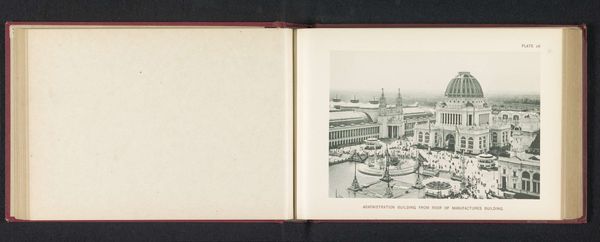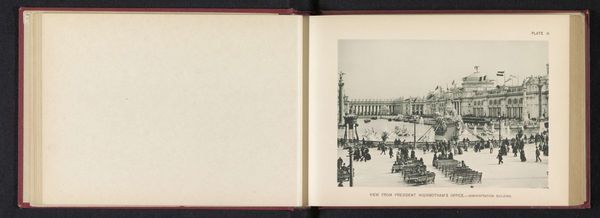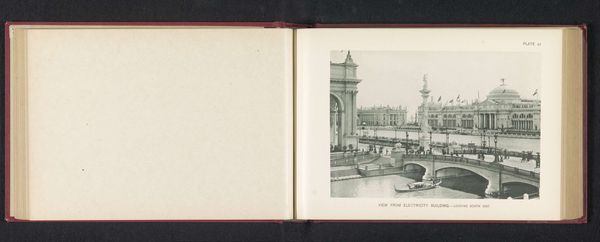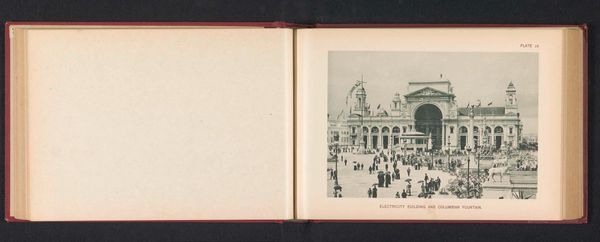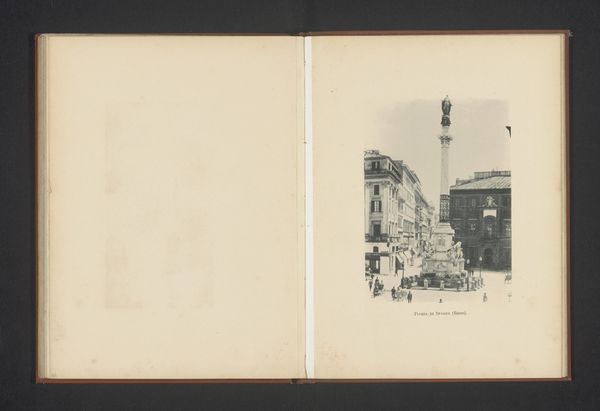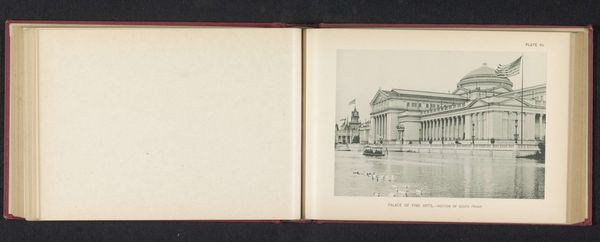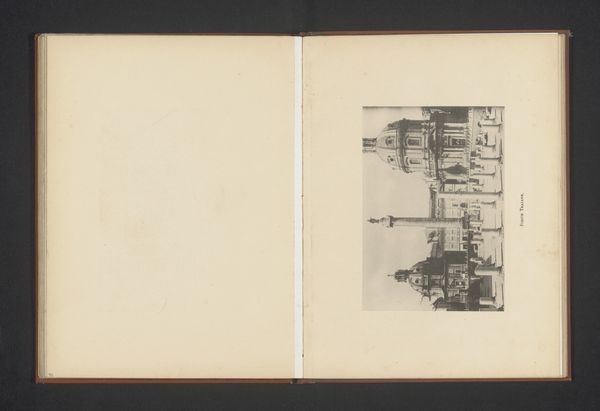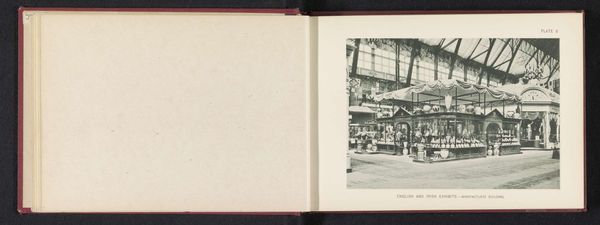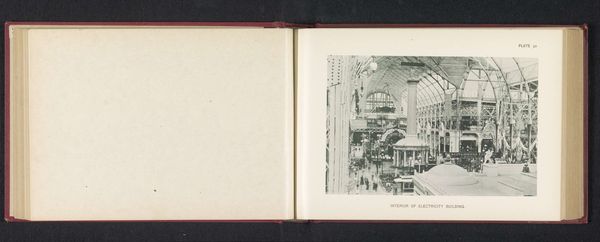
Gezicht op het gebouw voor techniek en vrije kunsten op de World's Columbian Exposition in Chicago in 1893 1893
0:00
0:00
Dimensions: height 134 mm, width 191 mm
Copyright: Rijks Museum: Open Domain
Curator: Alright, let’s talk about this photograph by Charles Dudley Arnold, taken in 1893. It's titled "Gezicht op het gebouw voor techniek en vrije kunsten op de World's Columbian Exposition in Chicago in 1893"—or, "View of the building for Technology and Free Arts at the World's Columbian Exposition in Chicago." Editor: Wow. It strikes me as overwhelmingly…optimistic? All those neoclassical buildings gleaming, throngs of people promenading. It's a vision of pure progress, caught in sepia tones. Curator: That's exactly what the Exposition was meant to project. A celebration of American ingenuity and industry after a pretty turbulent period. It aimed to visually embody ideals of the City Beautiful movement. Look at the planned, orderly arrangement. Editor: Almost too orderly. There’s a uniformity that borders on sterile. Makes me wonder, what were they hiding under all that grandeur? You know, the grit, the labor...the real story. Curator: Of course! These world fairs were carefully staged spectacles. Arnold's albumen print becomes a form of visual propaganda, selling this idea of a harmonious, progressive future while masking societal tensions and inequalities. It’s very effective. Editor: Definitely effective. But also a bit chilling now, seeing how that projected future compares to the present reality. Though the detail is amazing, capturing a moment teeming with people and aspirations frozen in time. Curator: Indeed. Albumen prints were quite common at the time, renowned for their ability to render fine detail and create a glossy surface. Notice how the light plays on the architecture, emphasizing the grand scale? The medium itself adds to that sense of a perfected reality. Editor: It makes me think about photography's role at that moment in history. To what extent could photography offer a genuine depiction of the world, and to what extent was it being deployed to actively construct idealized versions of society? Curator: That's the critical question, isn't it? This image, on the surface, is a testament to American ambition. Dig deeper, and it unveils a fascinating power dynamic between vision and reality, filtered through the lens—quite literally. Editor: Gives one pause to wonder which parts of our present we're meticulously curating for the eyes of the future. Thanks, Arnold! Food for thought.
Comments
No comments
Be the first to comment and join the conversation on the ultimate creative platform.
